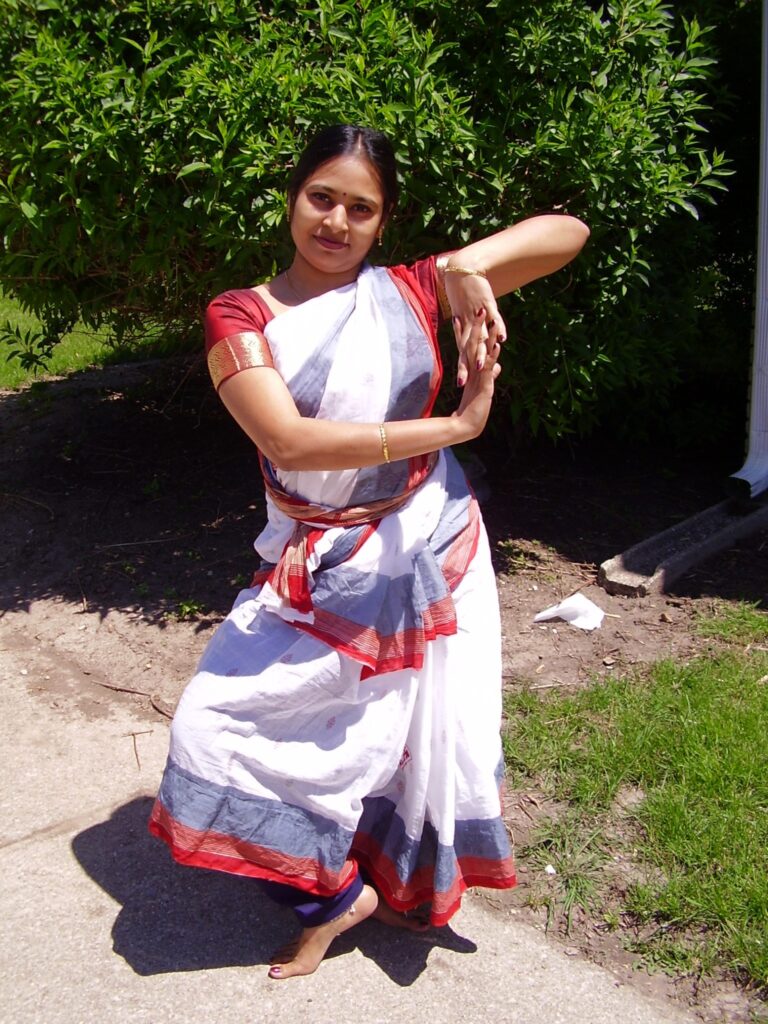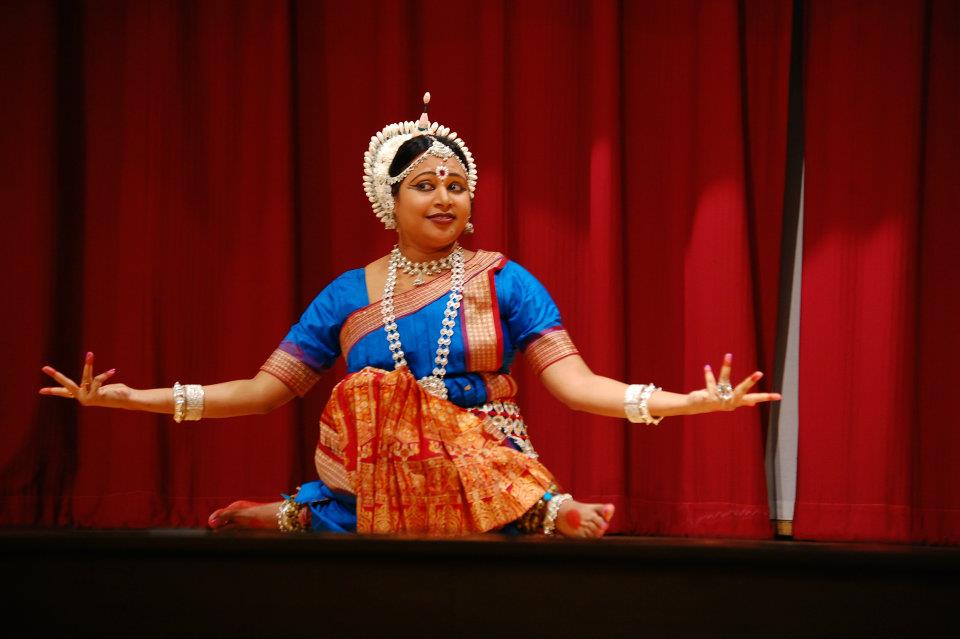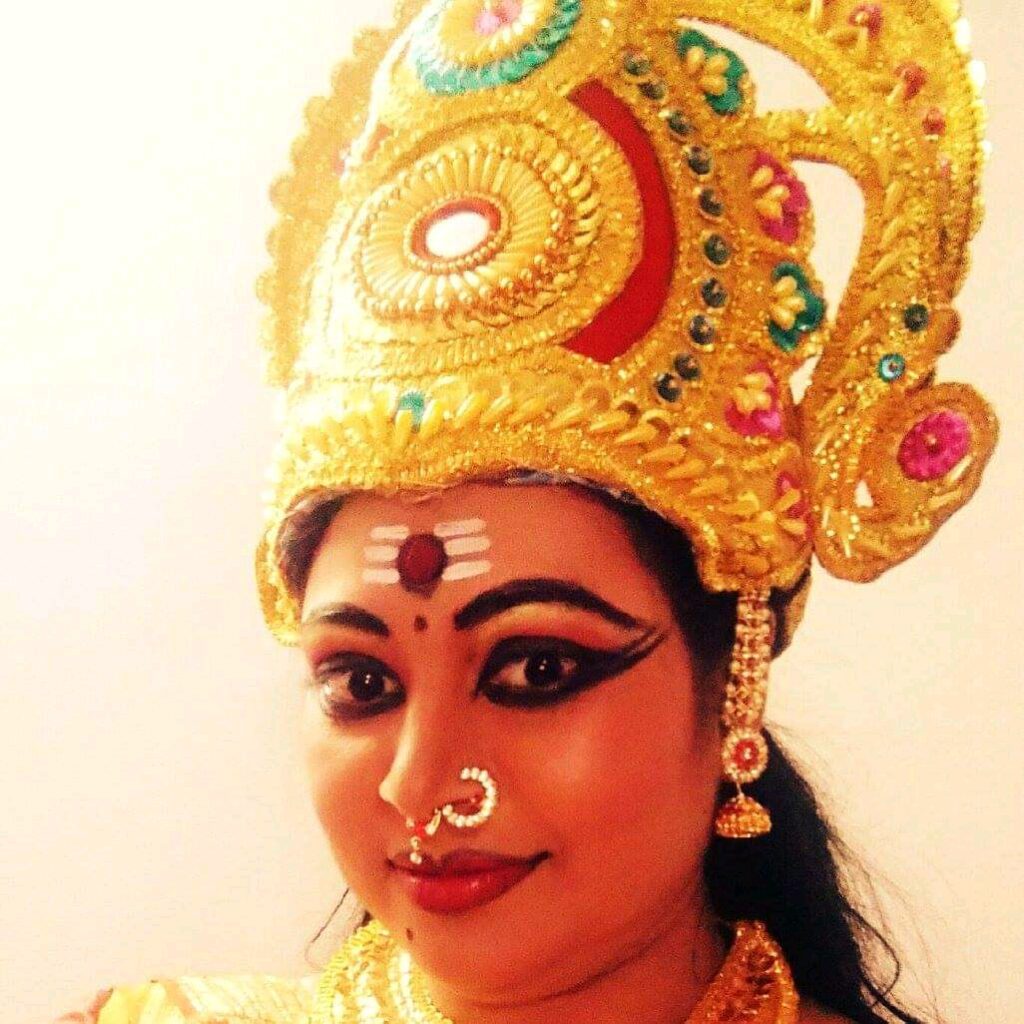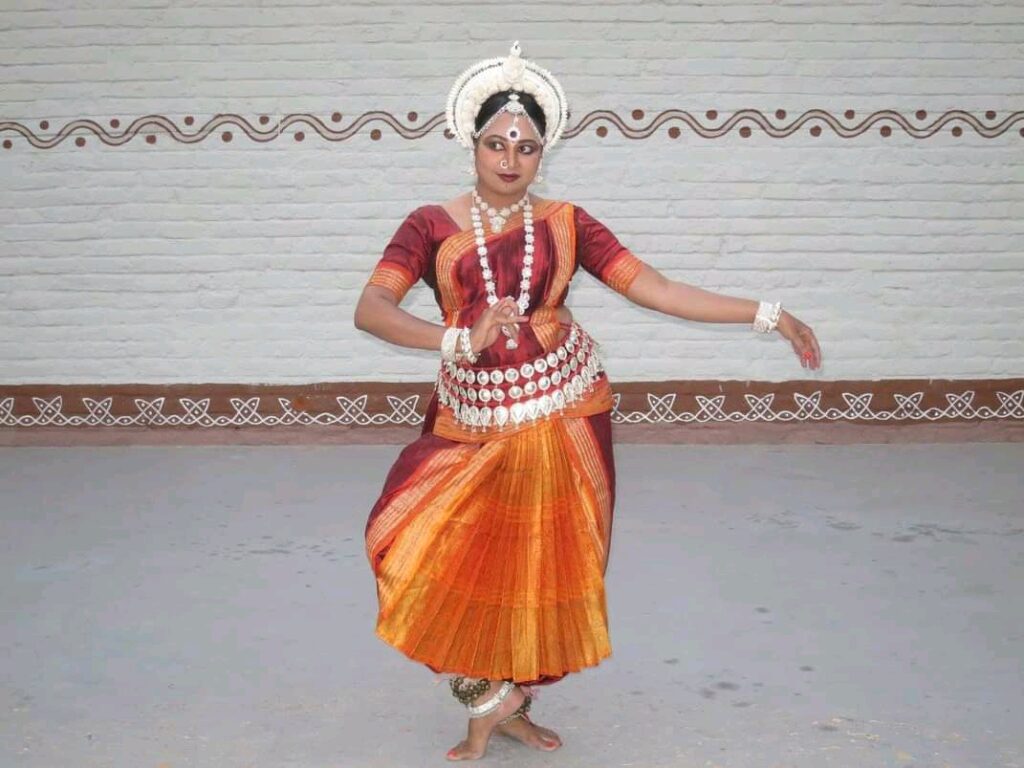
Odissi dancer and founder of Dancing Dolls, Gullapudi Raman Kumari speaking to Natyahasini says that she firmly believes in arts and its importance in one’s life. To prove her point, she quotes from William Shakespeare’s The Merchant of Venice: “The man that hath no music in himself, nor is not moved with concord of sweet sounds, is fit for treasons, stratagems, and spoils; The motions of his spirit are dull as night, And his affections dark as Erebus. Let no such man be trusted. Mark the music.” She further says, Art is independent, no one owns it. “Artist is just a contributor. Art is both time-bound and timeless.”
Born and brought up in Chatrapur, district headquarters of south-eastern district Ganjam, Odisha, Raman Kumari’s parents, who hailed from South India, were very keen that she learn a dance form, and were initially looking for a teacher in Kuchipudi or Bharatnatyam, but they couldn’t find one where they resided or rather the Lord wanted her to learn Odissi. Her parents zeroed in on Kala Vikash Kendra, where Odissi was taught. “I joined the school when I was seven-years-old. At that time, Guru Gajendra Panda was teaching there, then Guru Sudhakar Sahu and then D. Litt. Dr. Manoj Kumar Behera. That’s how my dancing journey began,” she says.
Solid Base: In the first few days of learning dance, the little mind of her broke down the dance steps as whatever was done on the right side of the body, the same was repeated on the left side as well. “Initially, I had no idea that I was learning Odissi. As I grew up learning it, I fell in love with the sublime, lyricism and gracefulness of Odissi,” says the artist. The Odissi dancer’s all the three gurus are torch bearers of typical Guru Deba Prasad Das style of Odissi, and that’s how she has a solid base in the Deba Prasad Das style.
Recalling her learning journey with her Gurus, Raman Kumari says that her first guru Gajendra Panda, who recently received the Sangeet Natak Academy award from Orissa Govt., was very strict and laborious in his approach. “He used to call me Sundari. The experience of learning from him taught me how to work hard to achieve qualitative milestones. He was very open to every kind of experiment and always encouraged every small effort,” she says.
Her second guru Guru, Sudhakar Sahu, Central Sangeet Natak Academy awardee, was very loving, but used to teach juniors occasionally, and spent most of his teaching time with seniors. “Senior students used to take our classes with much attention and precision. As I was very curious for learning dance, after my class, I used to stay back and peep into the class where he was teaching the seniors. I have been mesmerized by his abhinaya teaching with detailed nuances to evoke emotions. His subtle and standardised imaginary choreographies definitely stayed with me,” says the dancer.

Dance Studies: Raman Kumari says that learning with Dr. Manoj Kumar Behera was very thoughtful in terms of theoretic interpretations in dance. “He always paid lot of attention to literature. Though he was very strict, and I being a mischievous student, had a good rapport with him. Under his guidance, I completed my Graduation and Masters from Akhila Bharatiya Gandharva Maha Vidyalaya, Mumbai. He introduced me to both Kelucharan Mahapatra and Pankaj Charan Das style of Odissi along with the Deba Prasad Das style of Odissi. During my Master’s examination, when I was dancing “Ramani Ratana Meghaku Chaahin” – an Oriya Champu or Chapu-Kavya, a genre of literary composition in Indian literature, Guru Pankaj Charan Das saw my performance and told my guru Dr. Behera that he will teach me dance. But it couldn’t last for long due to his sudden demise in 2003,” she says.
When questioned on which style of the three Odissi dance styles, she likes, Raman Kumari says that all the three styles have their own sweetness and fantastic movement fabrication of their own. “All the three styles definitely make me understand how Odissi as a dance form evolved by these three gurus apart from others into three different dimensions, just like a seed grows into a plant with branches growing in different directions. I personally love and admire all the three styles.”

Guru Deba Prasad Das style: Giving a brief description of all the three Odissi styles, Raman Kumari says that Guru Deba Prasad Das style of Odissi demands tremendous physical fitness and lays equal emphasis on the sensitive facial expression, more on Satwika Bhava. “His suffuse of straight forward movements with strong and fast paced footwork with limited torso movements makes his signature choreographies unique. Most of his choreographies are based on Shiva concept. His inclusion of Sabdaswarapattas into Mangalacharan, slokas on postures were specially written for Sthayee, inclusion of Raag Parichay in his Pallavis. The lyrics are given utmost importance with less abstract movements along with special use of leg movements in his Abhinayas,” she states.
The artist says that Guru Kelucharan Mahapatra style choreographies emphasize on steady stance coupled with fluid movements and perfect postures in both tandava and lasya. “His approach in the visualisation of dancer as sculpture and transferring those movements and curves in his choreographies are mind blowing. His infusion of Odissi with sensual, rounded, and oscillated movements makes his choreography distinctive.”
According to her, Guru Pankaj Charan Das style choreographies are laden with Bhakti Rasa. “His prodigious capacity to follow the nuances of the sacred dance display with exemplary precision. His adoption of some esoteric dance styles, including Bandha Nrutya- (complex poses and convoluted movements) and Thali Nritya (in which the dancer balances on a brass plate with toes while simultaneously rotating two smaller plates with hands) are very special. His choreographies are predominantly soft, vigorous and theatrical where devotional offering to the Lord, has more to do with expression than movements. His choreographies on many Pallavis and special dance pieces on the concept of Devi are intricate master pieces,” she says.

Father well-versed: Raman Kumari shares that on her paternal side, there are many creative minds but no one has ever taken their creativity as profession. “My father pursued many art forms. He was very creative and an open-minded person. Hence, I have had my hands in many Art forms, but pursuing dance is my passion and profession,” she says. But currently, she has an interest in learning creative writing. “Because writing can be a magnificent tool in expressing one’s artistic perception among elitists,” says the dancer. Raman Kumari is a writer of dance book and she has to her credit – Mudra Viniyoga Prakriya, and is now working on Taal Anuvaad.
The Odissi dancer shares that while they were performing at Paralakhemundi, Gajapati district of Orissa, sponsored by Orissa Sangeet Natak Academy, while they were dancing ‘Dasa Avatar’, her dance dress pant string broke, and she had to make a quick exit holding her pants, only to fix it quickly and return to dancing. A Law graduate, who gave up Master’s in Human Rights mid-way, due to time constraints, is keen to pursue Ph. D. with the blessings of the Almighty. However, the dancer misses those days of long hours of dance rehearsals soaked with sweat all day long. “All that mattered was dance, eat, sleep.”
Vast Experience: The dancer reveals that since she started dance teaching journey, many students graduated under her guidance as she has worked in different institutions. “I taught at Kala Vikas Kendra, CTP, Nupur institution, Berhampur, Kendriya Vidyalaya, Berhampur, Dance department of University of illinois, USA, Rhythm and Raag, USA, World Music department of University of Illinois, USA, Feet on Earth, Hyderabad. Then, I founded my own institution – Dancing Dolls. My academy Dancing Dolls is still a novice. Hoping for few graduates in couple of years,” she says, quickly adding that since, three years they have been providing certification courses. “So far, many of our students have stood out with distinctions each year,” she adds.
Raman Kumari says that she has been teaching online since 2008. “Over the time I have acquired a great deal of different methodology to teach online. Having said that my challenge was to transfer the in-person class students to online, adopt to virtual classes. Now all seem very comfortable.” She also teaches dance to her daughter, but says that her daughter also learns piano and taekwondo. “She is also into many art forms. She is a good wave boarder, scatter, video maker, and does pencil arts,” says the proud mom.

Just spell bound
Keep it up
Really proud of you
Can you be more specific about the content of your article? After reading it, I still have some doubts. Hope you can help me.